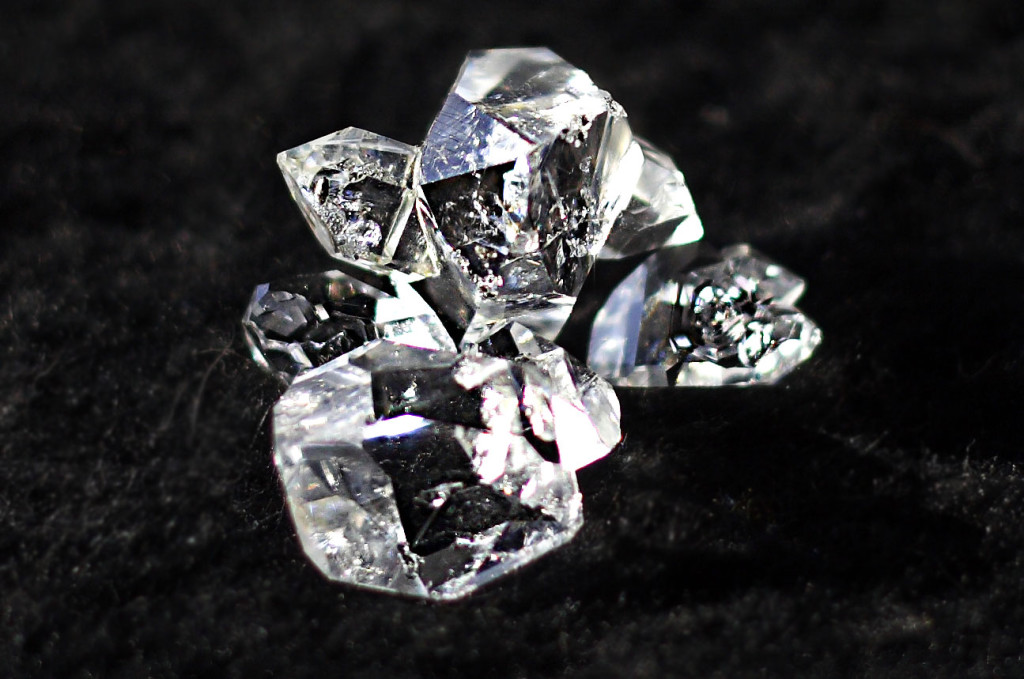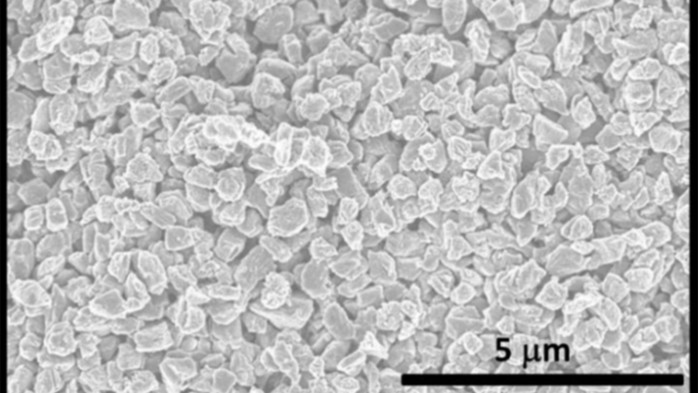
[Image above] Credit: Rosana Prada; Flickr CC BY 2.0
Besides their radiant, sparkling beauty, diamonds are incredibly tough. Their mechanical strength, optical transparency, high thermal conductivity, electrical insulation, and potential semiconductor properties make them uniquely suited to a whole host of materials science applications.
But scientists aren’t mining the earth for these precious gems. They’re creating diamonds in the lab from graphene. And some scientists have even discovered ways of creating diamonds from peanut butter. No joke.
Efficient methods of mass-producing tougher-than-tough diamonds in the lab is especially crucial when it comes to outfitting machining tools that require sharp blades to cut, grind, and slice through hard materials like steel and ceramics.
Recently, researchers from North Carolina State University discovered a new phase of solid carbon that is harder than diamonds and can be formed at room temperature and at ambient atmospheric pressure, according to an NC State news release.
Called Q-carbon, this new phase is distinct from the known phases of graphite and diamond.
“We’ve now created a third solid phase of carbon,” ACerS member Jay Narayan, who is also John C. Fan Distinguished Chair Professor of Materials Science and Engineering at NC State and lead author of the papers describing the work, says in the release. “The only place it may be found in the natural world would be possibly in the core of some planets.”
Narayan and his team found that Q-carbon has some unusual characteristics—one being the fact that it’s ferromagnetic, a characteristic that doesn’t apply to other solid forms of carbon.
“We didn’t even think that was possible,” Narayan says.
Narayan and his colleagues create Q-carbon by starting with a substrate, such as sapphire, glass, or a plastic polymer.
“The substrate is then coated with amorphous carbon—elemental carbon that, unlike graphite or diamond, does not have a regular, well-defined crystalline structure. The carbon is then hit with a single laser pulse lasting approximately 200 nanoseconds. During this pulse, the temperature of the carbon is raised to 4,000 Kelvin (or around 3,727 degrees Celsius) and then rapidly cooled. This operation takes place at one atmosphere—the same pressure as the surrounding air. The end result is a film of Q-carbon, and researchers can control the process to make films between 20 nanometers and 500 nanometers thick,” the release explains.
By using these different substrates and changing duration of the laser pulse, the researchers can control how quickly carbon cools, which, as a result, allows diamond structures to form within the Q-carbon.

A scanning electron micrograph of microdiamonds made using the new technique. Credit: Jay Narayan via NC State University News
“We can create diamond nanoneedles or microneedles, nanodots, or large-area diamond films, with applications for drug delivery, industrial processes, and for creating high-temperature switches and power electronics,” Narayan says. “These diamond objects have a single-crystalline structure, making them stronger than polycrystalline materials. And it is all done at room temperature and at ambient atmosphere. So, not only does this allow us to develop new applications, but the process itself is relatively inexpensive.”
“In 15 minutes, we can make a carat of diamonds,” Narayan says in a NY Times article.
In addition to being harder than diamond, Q-carbon glows when exposed to even low levels of energy, which gives the material significant potential for electronic applications.
“Q-carbon’s strength and low work-function—its willingness to release electrons—make it very promising for developing new electronic display technologies,” Narayan says.
Narayan and his colleagues are still learning about the properties of Q-carbon and can successfully make Q-carbon films, but they’re still in the experimental phase regarding how to manipulate the material.
“We know a lot about diamond, so we can make diamond nanodots. We don’t yet know how to make Q-carbon nanodots or microneedles. That’s something we’re working on,” Narayan says.
NC State University has filed two provisional patents on the Q-carbon and diamond creation techniques.
The research is presented in the paper, “Novel phase of carbon, ferromagnetism and conversion into diamond,” published in Journal of Applied Physics (DOI: 10.1063/1.4936595).
The work is also discussed in the paper, “Direct conversion of amorphous carbon into diamond at ambient pressures and temperatures in air,” published in APL Materials (DOI: 10.1063/1.4932622).
